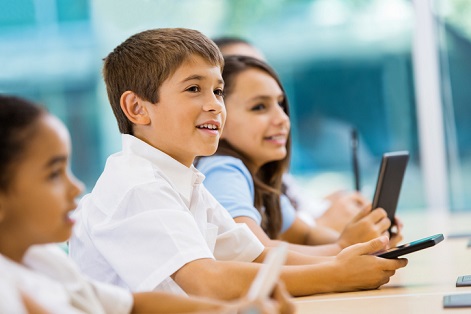
Earlier this month, a new report revealed the emerging global trends in K-12 education and the challenges educators are facing as the school and technology landscape rapidly shift.
The global analysis identified a growing need for educators to focus on students’ computational thinking, teachers’ innovative pedagogy and preparing young people with the life skills and workforce preparation needed to succeed after school.
Some leading education experts and technologists envisage a move towards a more tech-centric education system where students, leveraging mobile devices, increasingly direct their own learning and teachers act more as collaborators than front of classroom instructors.
To cater for these changes, physical classrooms are changing, too. However, just how well are Australian schools keeping pace with this shift?
In 2016, D2L founder John Baker told The Educator that Australia was “leading the world” when it came to creating the schools of the future. Recently, we asked Baker if this was still the case.
“Yes, I think so. Today, Australian schools continue to be world class when it comes to embracing new technologies to support better educational outcomes,” Baker told The Educator.
“What impresses me is that every year that I come back, results seem to be getting better. Progress has been compounding over multiple years.”
Game-changing developments
D2L’s Ignite conference, held in Brisbane recently, highlighted the work being done across the Australian K-12 and higher education space to improve students’ and teachers’ capacity in the classroom.
Baker said that Deakin University, Victoria University, the University of Tasmania and St Stephen’s College are some stand-out examples of educational institutions being experimental with technology and learning to improve outcomes.
“A case in point is Victoria University’s Block Model, which is rippling through students’ entire educational journey,” Baker said.
“They’re seeing better completion and graduation rates, students’ anxiety going down and faculties really enjoying the experience with this new model. These are all great indicators that the local market is embracing technology in a great way.”
Baker said Saint Stephen’s College (SSC) has been seeing exciting progress through its blended model which technology to support what’s happening in the traditional classroom.
“The College started out with taking all of the content for their upper year students and work their way back down in the younger years so these students can use technology earlier in their education,” he said.
“What we’re seeing is that they’re spending a lot of time making sure they get their assessment right and removing bias from the process of giving students their mark.”
Baker pointed out that a growing number of schools are embracing new models of education and seeing significant improvements in teaching and learning as a result.
“One of the things that stood out to me from the conference was the need to embrace technology widely across colleges and TAFEs,” he said.
“VU is a good example. Its Block Model was a chance for the University to push for 100% adoption. In some cases, faculty weren’t quite ready to embrace the technology, but the end outcome of that quick move to get to 100% adoption has been transformative.”
He said that under this model, students no longer face the painstaking wait for their results.
“They might do an assessment on the Thursday and by Friday the results are in the system right away. By Monday, they’re official and students can then progress on to the next block,” he said.
“That’s impressive”.
Mobile devices ‘dominant’ in modern learning
Baker said the drift towards mobile learning is pronounced, with some of his clients seeing half of their learning environment’s utilisation taking place on mobile phones.
“Students are taking assessments on the way to school, sending assignments directly from their phones, and capturing evidence of learning on their device and putting that into a portfolio,” he said.
“Mobile phones are becoming the dominant way for students to engage with learning, whether that’s inside or outside of the classroom.”
Baker said that in some cases – particularly in higher education sectors – mobile phones are the only device that students can afford.
“This is one of the reasons why schools should take a close look at their [mobile phone] policies,” Baker said.
“It’s reasonable to ensure that mobile devices aren’t a distraction when kids are meant to be learning, but at the same time, if this device is the only way for a student to learn, we certainly should not be blocking it.”


